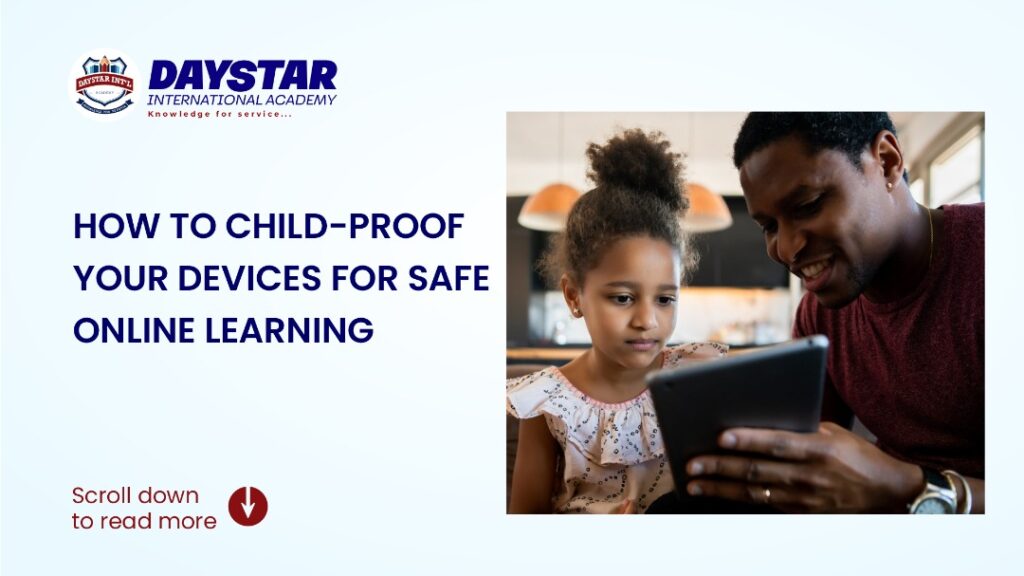
As parents, we want our children to explore the digital world with confidence—but we also want to make sure that exploration happens in a safe, protected space. Online learning has brought tremendous opportunities for kids, yet it has also exposed them to distractions, unsafe content, and overuse of devices. The good news? With the right setup, you can transform your child’s tablet, laptop, or phone into a safe, child-friendly learning hub.
Here’s how to child-proof your devices while keeping your little learner focused and secure:
- Start with Built-In Parental Controls
Most devices already come with powerful safety settings, you just have to activate them.
- iPads & iPhones: Use “Screen Time” to block certain apps, limit daily usage, and restrict inappropriate content.
- Android devices: Enable “Family Link” to monitor app downloads, set time limits, and manage what your child sees.
- Laptops & desktops: Windows and MacOS both have family settings that allow you to filter websites and track activity.
✅ Tip: Don’t just set controls and forget them. Revisit settings monthly as your child grows and learning needs change.
- Use Screen Time Controls Wisely
Too much screen time can lead to fatigue, distraction, and even irritability. Instead of cutting screens altogether, help your child balance online learning with healthy offline breaks.
- Set specific hours for schoolwork and leisure.
- Turn on “Downtime” modes during meals, family time, or bedtime.
- Teach kids to recognize when their body needs a break—stretching, walking, or resting eyes.
This not only keeps them safe but also builds self-discipline in managing technology.
- Secure the Internet Connection
An open internet is full of rabbit holes for curious kids. A secure one keeps them on track.
- Install child-safe browsers (like Kiddle or KidRex) that filter out inappropriate content.
- Use Wi-Fi filters or firewalls to block unsafe sites automatically.
- Create a separate Wi-Fi profile for your child’s device, with restricted access to non-educational platforms.
- Lock Down Apps and Notifications
One of the biggest distractions during online classes? Pop-ups and unnecessary apps.
- Turn off notifications from games and social media during school hours.
- Hide or uninstall apps that aren’t needed for learning.
- Use “Focus Mode” (Android) or “Do Not Disturb” (iOS) to silence everything except school-related platforms.
- Teach Digital Responsibility Alongside Restrictions
Child-proofing isn’t just about blocking access, it’s about teaching kids how to navigate responsibly.
- Show them why certain apps are limited or websites blocked.
- Discuss the dangers of oversharing personal information.
- Encourage them to tell you if they encounter something strange or confusing online.
When safety becomes a shared family value instead of just a set of rules, kids develop stronger judgment.
- Regular Device Check-Ups
Just like you’d check your car or your child’s backpack, their device needs routine check-ups.
- Review browsing history together (without turning it into a “gotcha” moment).
- Update safety software and antivirus regularly.
- Keep learning platforms organized so your child knows exactly where to go for school.
✅ Final Thought: Child-proofing devices isn’t about locking your child out, it’s about unlocking a safer, calmer, and more focused learning experience. With a mix of the right tools, healthy limits, and open conversations, your child can thrive online while you stay at ease.

